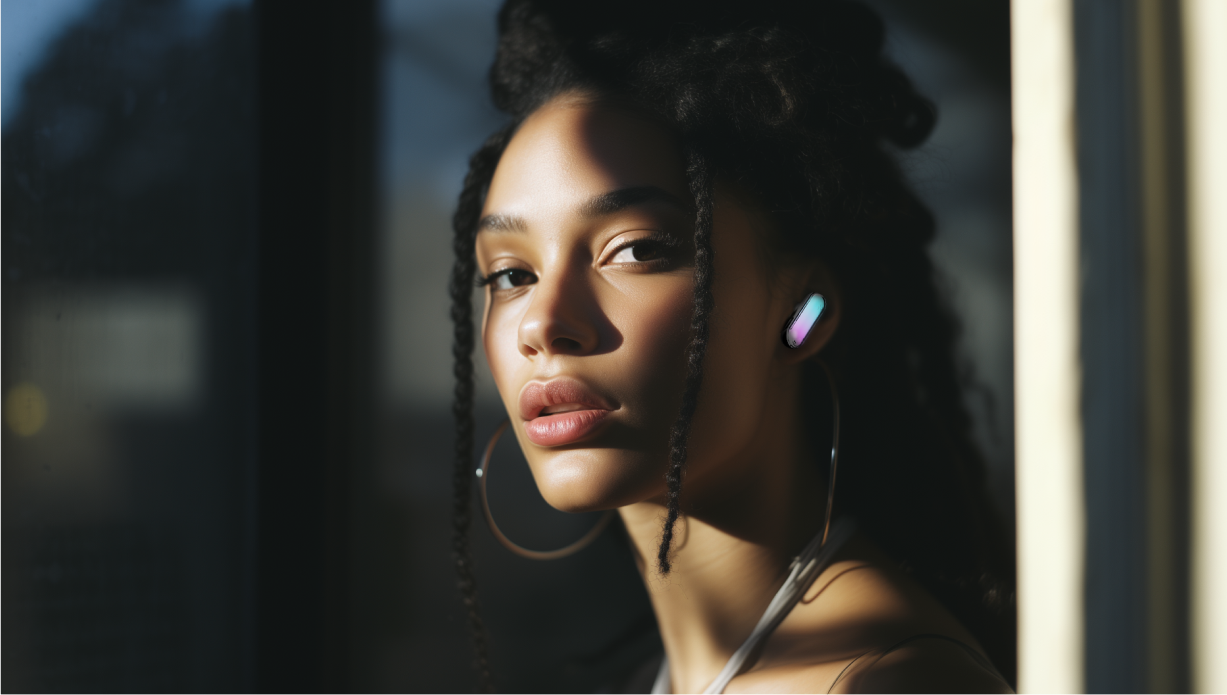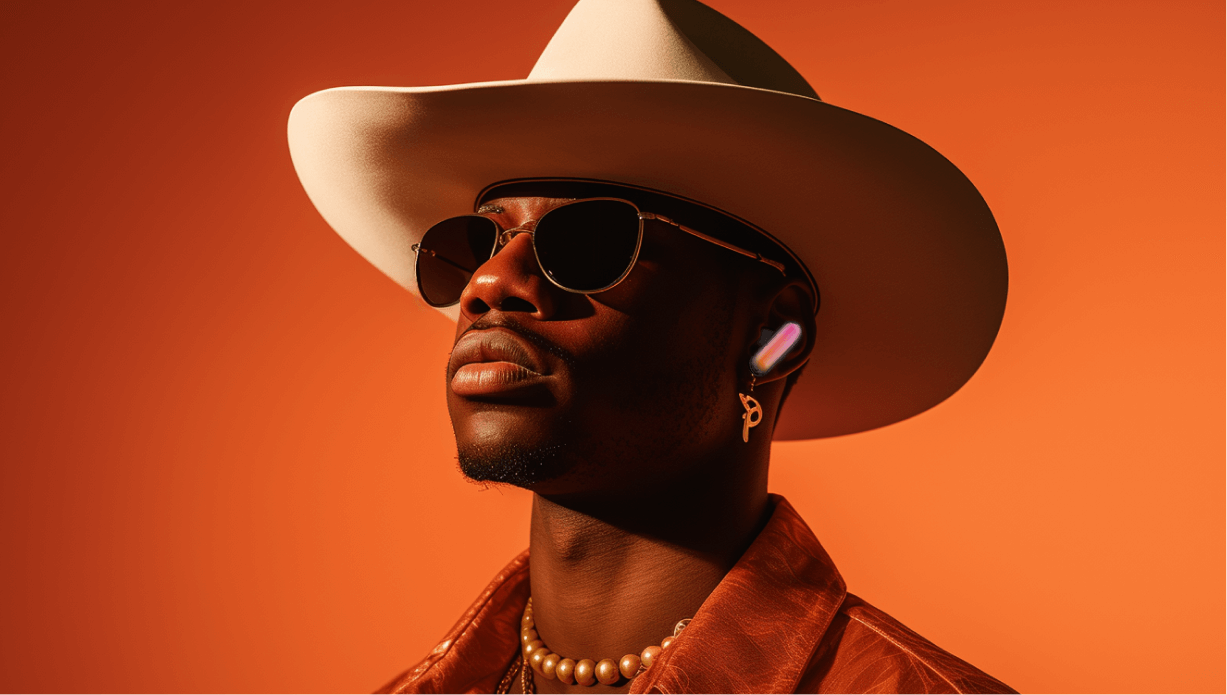How to choose high-quality Bluetooth wireless earbuds?
With the popularity of smartphones and audio sources, many manufacturers have entered high-quality earphones, and TWS earphones are wireless earphones without cables. In-ear styles are the mainstay of TWS today, featuring a highly sealed and compact design.
Except for headphone enthusiasts, most people's understanding of headphones only stays on the sound quality and noise reduction function, and then "the more expensive the better". There are very few headphones that can highlight your personality.
Let's take a look at what information you should know before buying true wireless earbuds.
TWS are a concept that has only emerged in recent years. The two earphones of the traditional TWS cannot be independent, either play together or pause together, but the TWS "cuts" the invisible line between the left and right ears, realizing the independent work of the left and right earphones.
Bluetooth earphones are transmitted wirelessly, so the sound can only be transmitted from the phone to the headset through encoding and decoding. Just like communicating with a deaf person, both parties must first learn sign language in order to communicate correctly.
Currently, there are four main encoding and decoding methods: SBC, AAC, aptX, LDAC and HWA (not yet mainstream).
• SBC (maximum bit rate 328kbps) is the earliest audio coding format, so at present, it is inevitably a bit outdated, with a delay of 200+ms. However, because it is a mandatory encoding format, all headphones currently on the market will support this format. It's standard in the Bluetooth headset industry.
The bit rate determines the degree of restoration of the sound, generally as long as the bit rate reaches 320kbps, it is qualified.
Currently, the three recognized high-quality decoding technologies are aptX-HD, LDAC, and HWA.
There are many ways to classify earphones, the most common ways are classification by wearing type and classification by sounding principle.
3.1 "Wearing type mainly affects sound insulation and wearing comfort, and of course portability. It is mainly divided into head-mounted, in-ear and semi-in-ear."
Headphones play a better physical sound insulation effect, and at the same time try to avoid the occurrence of sound leakage, so that the sound quality has been further improved, and the pronunciation point is at a certain distance from the external auditory canal, which can protect the ear canal when worn. Due to its large size, it is necessary to bring a storage box for long-distance travel, and it will feel sore to hang on the neck for a long time.
The sound energy of the in-ear earphone can be directly transmitted to the eardrum, thus obtaining a better airtightness, avoiding the occurrence of sound leakage to a great extent, and ensuring the sound quality; because this in-ear design completely closes the ear canal, it is easy to produce a stethoscope effect, and wearing it for a long time will feel uncomfortable or even tingling in the ear, and damage the eardrum.
Semi-in-ear earphones do not have earplugs, and the ear canal and earphones are not completely closed, so that the ear will not be oppressed, and the experience will be more comfortable. It is suitable for small partners who use it for a long time or have sensitive ear canals. The sealing is not good enough, and it is easy to leak sound. The sound insulation effect, active noise reduction and low frequency performance are naturally not as good as the in-ear type.
Summarize:
 3.2 "The sound unit mainly affects the sound quality and price, and is mainly divided into moving coil, moving iron, flat plate and static electricity. The latter two are commonly found in high-quality headphones."
3.2 "The sound unit mainly affects the sound quality and price, and is mainly divided into moving coil, moving iron, flat plate and static electricity. The latter two are commonly found in high-quality headphones."
The sound unit is the most expensive part of the headphone assembly, and it also plays a decisive role in the sound quality. A good sound unit can make the sound transparent and clear, and the sound field is naturally bright.
Dynamic earphones: The production technology of dynamic earphones is not high and easy to master, so the cost is not high. Many entry-level earphones on the market are dynamic unit earphones. In terms of sound quality, the mid-to-high-end dynamic earphones sound without a sense of distance and have an excellent dive. However, due to the large cavity of the dynamic earphone, improper wearing may lead to sound leakage.
Moving iron earphones: Common earphones are generally plugged into one or two moving iron units, and high-end earphones are plugged into 12 units or more. The more moving iron units are put in, the better the sound quality, but it is also proportional to the price. Most of the stage monitor earbuds now choose moving iron unit earphones.
 Coil iron combined with earphones: Coil iron combined with earphones, as the name suggests, is to put the moving iron unit and the moving coil unit into the earphone at the same time. It combines the advantages of the low frequency nature of moving coil headphones and the strong resolution of moving iron headphones. It can be said to be a powerful combination, and its cost is lower than that of top moving iron headphones. music experience. However, this type of earphone has high requirements for the technical strength of the manufacturer, and the price is naturally not low, basically more than 2,000. Therefore, it is better to choose a low-end coil iron than to buy a moving iron earphone or a moving coil earphone at the same price.
Coil iron combined with earphones: Coil iron combined with earphones, as the name suggests, is to put the moving iron unit and the moving coil unit into the earphone at the same time. It combines the advantages of the low frequency nature of moving coil headphones and the strong resolution of moving iron headphones. It can be said to be a powerful combination, and its cost is lower than that of top moving iron headphones. music experience. However, this type of earphone has high requirements for the technical strength of the manufacturer, and the price is naturally not low, basically more than 2,000. Therefore, it is better to choose a low-end coil iron than to buy a moving iron earphone or a moving coil earphone at the same price.
Electrostatic earphones: The production cost of electrostatic earphones is very high, and there are not many audiences in the market. The diaphragm needs to be made very thin, accurate to the order of a few microns, to ensure that it is faster, more detailed, and has a faster electrostatic transient response, and because its diaphragm is equally stressed, there is no problem of split vibration.
 The parameters that generally affect the sound quality of headphones mainly include noise reduction, tri-band analysis, impedance, sensitivity, and diaphragm material.
The parameters that generally affect the sound quality of headphones mainly include noise reduction, tri-band analysis, impedance, sensitivity, and diaphragm material.
4.1 Noise reduction function
Noise reduction is an important factor in measuring the quality of headphones, and it is mainly divided into two types: Active Noise Reduction and Passive Noise Reduction.
4.1.1 Passive noise reduction
Headphones mainly use physical properties to form a closed space through sound insulation materials of different materials to isolate external noise and avoid noise disturbing the ear. Since the cost of passive noise reduction is not high and the effect is average, the price is relatively low, and small partners with insufficient budget and low requirements can consider it.
4.1.2 Active noise reduction (ANC)
The propagation of sound is through sound waves, and if the waves are out of phase, they can cancel each other out under theoretical conditions. The noise-cancelling chip built into the active noise-cancelling headphones, when the noise-reducing wave is identified, will create an opposite sound wave to cancel the noise through the processor. This is called "destructive interference" in acoustics. Active noise reduction in daily life Headphones are more practical than passive noise cancellation.
4.2 Headphone three-frequency analysis
Headphone three-frequency refers to low frequency, medium frequency and high frequency, which is generally low, medium and high.
If the earphone is low frequency, the sound of the drum is more prominent;
Headphones with good mid-frequency can make vocals clearer and cover up the sound of musical instruments; since the spectrum of many musical instruments covers the mid-frequency, if the mid-frequency performance is not good, most of what you hear will be the sound of musical instruments.
The high frequency of headphones is mainly to listen to the overtones of musical instruments and vocals.
4.3 Impedance & Sensitivity
Impedance and sensitivity are factors that affect whether headphones can be driven (pushed) to sound, so put them together.
Impedance: Generally speaking, the smaller the impedance, the easier it is for the earphone to make a sound, and the higher the impedance, the harder it is to make a sound.
Sensitivity: Generally speaking, the higher the sensitivity, the easier the headset is to drive.
The diaphragm mainly depends on two points: whether it is lightweight; whether it is rigid. Lightweight and easy to drive, good rigidity can better perform sound quality, not easy to be distorted.
Actually, in recent years, with the upgrading and improvement of China's industrial chain as well as industrial design and manufacturing,there have emerged many cutting-edge brands with both excellent design and product capabilities, HHOGene is one of the most representative brands. It is an innovative tech brand under HHO, the idea firstly came from the concept of “light”, we hope to generate smart and funny products through continuous research on the digital light with technology and emotional design.
The first generation of HHOGene's tech product is GPods, which is the world’s first light earbuds with digital control that uses human control of light in a panoramic view of Bluetooth headsets to express unique self and personality. It is almost everything you could want from a pair of wireless earbuds. It’s with unique design, affordable price, great sound, and even supports active noise cancellation (ANC). Most importantly, it has the “Digital Light Control”function that equipped with 6 built-in LED lights with full-on red-green-blue (RGB) spectrum, so that you can explore 300,000 color combinations form 72 basic colors options. With these algorithmic controls, the color of each LED changes to match the music, the beat, and the groove. The color and music blend for a knockout light show, night or day. Personal preferences are strongly encouraged. Choose the right shade for the right mood. Shine every time.
HHOGene GPods is a good choice for those who value the sound quality experience and excellent ANC, but also want to be different. The “Digital Light Selection” enables GPods more diverse expression which can meet the various needs of users.
Except for headphone enthusiasts, most people's understanding of headphones only stays on the sound quality and noise reduction function, and then "the more expensive the better". There are very few headphones that can highlight your personality.
Let's take a look at what information you should know before buying true wireless earbuds.
TWS are a concept that has only emerged in recent years. The two earphones of the traditional TWS cannot be independent, either play together or pause together, but the TWS "cuts" the invisible line between the left and right ears, realizing the independent work of the left and right earphones.
Bluetooth earphones are transmitted wirelessly, so the sound can only be transmitted from the phone to the headset through encoding and decoding. Just like communicating with a deaf person, both parties must first learn sign language in order to communicate correctly.
Currently, there are four main encoding and decoding methods: SBC, AAC, aptX, LDAC and HWA (not yet mainstream).
• SBC (maximum bit rate 328kbps) is the earliest audio coding format, so at present, it is inevitably a bit outdated, with a delay of 200+ms. However, because it is a mandatory encoding format, all headphones currently on the market will support this format. It's standard in the Bluetooth headset industry.
The bit rate determines the degree of restoration of the sound, generally as long as the bit rate reaches 320kbps, it is qualified.
Currently, the three recognized high-quality decoding technologies are aptX-HD, LDAC, and HWA.
There are many ways to classify earphones, the most common ways are classification by wearing type and classification by sounding principle.
3.1 "Wearing type mainly affects sound insulation and wearing comfort, and of course portability. It is mainly divided into head-mounted, in-ear and semi-in-ear."
Headphones play a better physical sound insulation effect, and at the same time try to avoid the occurrence of sound leakage, so that the sound quality has been further improved, and the pronunciation point is at a certain distance from the external auditory canal, which can protect the ear canal when worn. Due to its large size, it is necessary to bring a storage box for long-distance travel, and it will feel sore to hang on the neck for a long time.
The sound energy of the in-ear earphone can be directly transmitted to the eardrum, thus obtaining a better airtightness, avoiding the occurrence of sound leakage to a great extent, and ensuring the sound quality; because this in-ear design completely closes the ear canal, it is easy to produce a stethoscope effect, and wearing it for a long time will feel uncomfortable or even tingling in the ear, and damage the eardrum.
Semi-in-ear earphones do not have earplugs, and the ear canal and earphones are not completely closed, so that the ear will not be oppressed, and the experience will be more comfortable. It is suitable for small partners who use it for a long time or have sensitive ear canals. The sealing is not good enough, and it is easy to leak sound. The sound insulation effect, active noise reduction and low frequency performance are naturally not as good as the in-ear type.
Summarize:
 3.2 "The sound unit mainly affects the sound quality and price, and is mainly divided into moving coil, moving iron, flat plate and static electricity. The latter two are commonly found in high-quality headphones."
3.2 "The sound unit mainly affects the sound quality and price, and is mainly divided into moving coil, moving iron, flat plate and static electricity. The latter two are commonly found in high-quality headphones."The sound unit is the most expensive part of the headphone assembly, and it also plays a decisive role in the sound quality. A good sound unit can make the sound transparent and clear, and the sound field is naturally bright.
Dynamic earphones: The production technology of dynamic earphones is not high and easy to master, so the cost is not high. Many entry-level earphones on the market are dynamic unit earphones. In terms of sound quality, the mid-to-high-end dynamic earphones sound without a sense of distance and have an excellent dive. However, due to the large cavity of the dynamic earphone, improper wearing may lead to sound leakage.
Moving iron earphones: Common earphones are generally plugged into one or two moving iron units, and high-end earphones are plugged into 12 units or more. The more moving iron units are put in, the better the sound quality, but it is also proportional to the price. Most of the stage monitor earbuds now choose moving iron unit earphones.
 Coil iron combined with earphones: Coil iron combined with earphones, as the name suggests, is to put the moving iron unit and the moving coil unit into the earphone at the same time. It combines the advantages of the low frequency nature of moving coil headphones and the strong resolution of moving iron headphones. It can be said to be a powerful combination, and its cost is lower than that of top moving iron headphones. music experience. However, this type of earphone has high requirements for the technical strength of the manufacturer, and the price is naturally not low, basically more than 2,000. Therefore, it is better to choose a low-end coil iron than to buy a moving iron earphone or a moving coil earphone at the same price.
Coil iron combined with earphones: Coil iron combined with earphones, as the name suggests, is to put the moving iron unit and the moving coil unit into the earphone at the same time. It combines the advantages of the low frequency nature of moving coil headphones and the strong resolution of moving iron headphones. It can be said to be a powerful combination, and its cost is lower than that of top moving iron headphones. music experience. However, this type of earphone has high requirements for the technical strength of the manufacturer, and the price is naturally not low, basically more than 2,000. Therefore, it is better to choose a low-end coil iron than to buy a moving iron earphone or a moving coil earphone at the same price.Electrostatic earphones: The production cost of electrostatic earphones is very high, and there are not many audiences in the market. The diaphragm needs to be made very thin, accurate to the order of a few microns, to ensure that it is faster, more detailed, and has a faster electrostatic transient response, and because its diaphragm is equally stressed, there is no problem of split vibration.
 The parameters that generally affect the sound quality of headphones mainly include noise reduction, tri-band analysis, impedance, sensitivity, and diaphragm material.
The parameters that generally affect the sound quality of headphones mainly include noise reduction, tri-band analysis, impedance, sensitivity, and diaphragm material.4.1 Noise reduction function
Noise reduction is an important factor in measuring the quality of headphones, and it is mainly divided into two types: Active Noise Reduction and Passive Noise Reduction.
4.1.1 Passive noise reduction
Headphones mainly use physical properties to form a closed space through sound insulation materials of different materials to isolate external noise and avoid noise disturbing the ear. Since the cost of passive noise reduction is not high and the effect is average, the price is relatively low, and small partners with insufficient budget and low requirements can consider it.
4.1.2 Active noise reduction (ANC)
The propagation of sound is through sound waves, and if the waves are out of phase, they can cancel each other out under theoretical conditions. The noise-cancelling chip built into the active noise-cancelling headphones, when the noise-reducing wave is identified, will create an opposite sound wave to cancel the noise through the processor. This is called "destructive interference" in acoustics. Active noise reduction in daily life Headphones are more practical than passive noise cancellation.
4.2 Headphone three-frequency analysis
Headphone three-frequency refers to low frequency, medium frequency and high frequency, which is generally low, medium and high.
If the earphone is low frequency, the sound of the drum is more prominent;
Headphones with good mid-frequency can make vocals clearer and cover up the sound of musical instruments; since the spectrum of many musical instruments covers the mid-frequency, if the mid-frequency performance is not good, most of what you hear will be the sound of musical instruments.
The high frequency of headphones is mainly to listen to the overtones of musical instruments and vocals.
4.3 Impedance & Sensitivity
Impedance and sensitivity are factors that affect whether headphones can be driven (pushed) to sound, so put them together.
Impedance: Generally speaking, the smaller the impedance, the easier it is for the earphone to make a sound, and the higher the impedance, the harder it is to make a sound.
Sensitivity: Generally speaking, the higher the sensitivity, the easier the headset is to drive.
The diaphragm mainly depends on two points: whether it is lightweight; whether it is rigid. Lightweight and easy to drive, good rigidity can better perform sound quality, not easy to be distorted.
Actually, in recent years, with the upgrading and improvement of China's industrial chain as well as industrial design and manufacturing,there have emerged many cutting-edge brands with both excellent design and product capabilities, HHOGene is one of the most representative brands. It is an innovative tech brand under HHO, the idea firstly came from the concept of “light”, we hope to generate smart and funny products through continuous research on the digital light with technology and emotional design.
The first generation of HHOGene's tech product is GPods, which is the world’s first light earbuds with digital control that uses human control of light in a panoramic view of Bluetooth headsets to express unique self and personality. It is almost everything you could want from a pair of wireless earbuds. It’s with unique design, affordable price, great sound, and even supports active noise cancellation (ANC). Most importantly, it has the “Digital Light Control”function that equipped with 6 built-in LED lights with full-on red-green-blue (RGB) spectrum, so that you can explore 300,000 color combinations form 72 basic colors options. With these algorithmic controls, the color of each LED changes to match the music, the beat, and the groove. The color and music blend for a knockout light show, night or day. Personal preferences are strongly encouraged. Choose the right shade for the right mood. Shine every time.
HHOGene GPods is a good choice for those who value the sound quality experience and excellent ANC, but also want to be different. The “Digital Light Selection” enables GPods more diverse expression which can meet the various needs of users.










Leave a comment